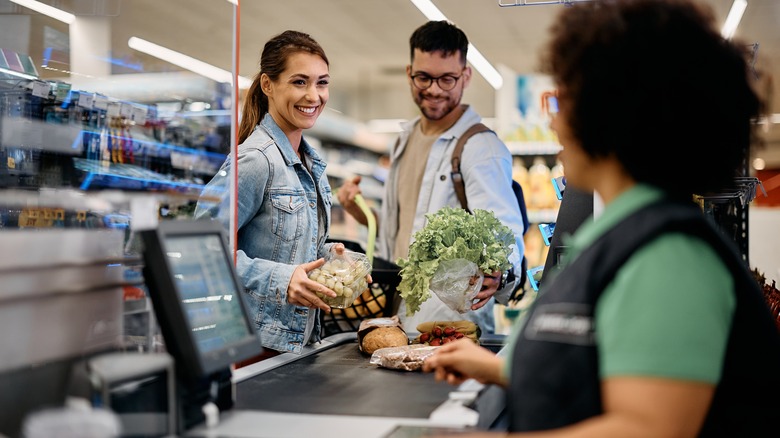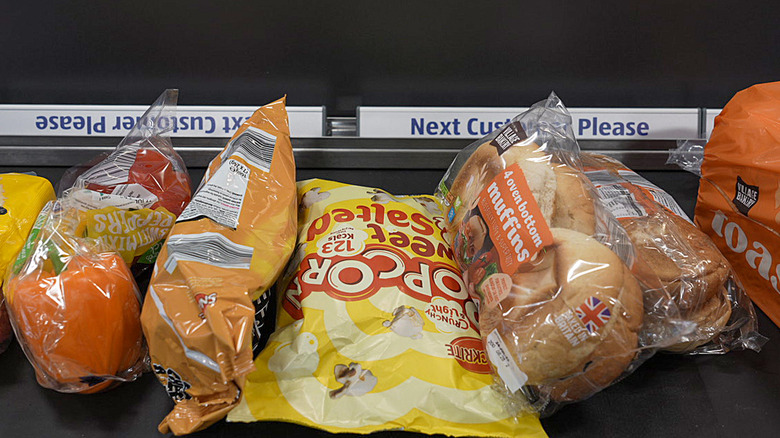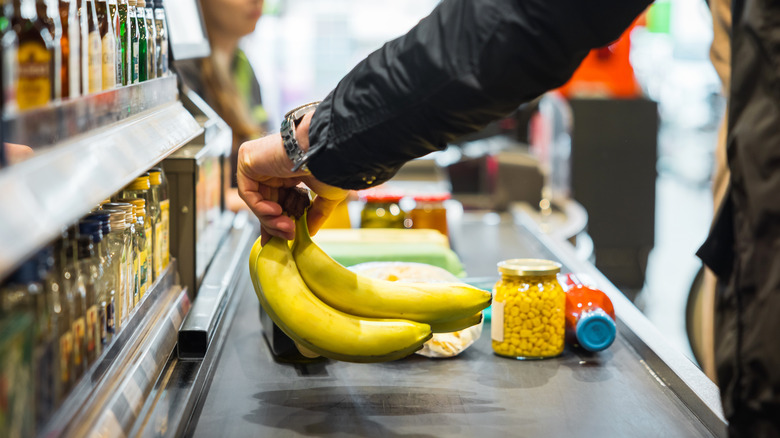This Supermarket Checkout Strategy Makes Life So Much Easier
When you return from the grocery store, is the unpacking process a mess? If so, you might need to work on your checkout strategy. Laying out all your items haphazardly doesn't set you up for success. Luckily, we have a trick that will make life so much easier.
When you reach the checkout stand and unload your cart, place similar items together. This way, they'll be bagged in the right order and stacked nicely when put away. After all, when bagging groceries, it's natural to pull from whatever items are right in front of you. You are not going to wait until everything crosses the conveyor belt to start packing. And if you do, the next customer in line won't exactly be pleased.
Regardless of whether you're using self-checkout or your supermarket has designated baggers, this strategy applies. However, it does require some planning — we would know. As frequent shoppers, we understand the ins and outs of bagging groceries. And to help you get organized, we've detailed our strategy below.
Place like items together
There's a science to bagging groceries, and ultimately, it's a domino effect. The way you stack groceries on the conveyor belt impacts the way they'll end up in the bag. And how your groceries are bagged affects how they'll be unpacked, so ask yourself: how is your pantry organized? As you keep reading, use this knowledge as a guide. We'll give you tips to make the process even smoother. But since everyone's kitchen is a bit different, pick and choose what works for you.
Basically, items that belong in the same section of your kitchen should be grouped together at the checkout stand. Think cleaning supplies, produce, and dry goods. That way, when you get home, you can place the bag right in front of where it needs to go. There's no need to walk back and forth across the kitchen; unloading will be a breeze!
Another thing to consider is climate control. Pack refrigerated items in one bag and frozen items in another to keep everything at the right temperature. However, if it's a hot day, consider sneaking a few of the frozen items in with perishables. This will help preserve items longer, especially if they'll be sitting in the car for a while. So, if you've snagged a to-go sushi from the fresh food section, throw in frozen peas to keep it super fresh.
Start with heavy items, end with delicate ones
When bagging groceries, it's crucial to pack a sturdy bag. We realize we just told you to place all like items together. However, there are some obvious exceptions. If you load a bag with canned goods, we doubt you'll make it to the car. Instead, you'll be holding a broken bag with cans rolling all over the parking lot. To avoid this disaster, place all heavy items on the conveyor belt first. Then, you can disperse them at the bottom of each bag to spread out the weight. And if a bag feels particularly heavy, don't be afraid to double bag it. Better safe than sorry.
Similarly, delicate items should be placed at the very end of the conveyor belt. Distribute them among the bags you've already packed, letting the other groceries work as a cushion. These fragile foods include crushable items like berries, bananas, and lettuce. Eggs and bread should be placed at the very top for extra safety.
If your supermarket uses baggers, they'll do all this for you. However, arranging your groceries in the appropriate order will make their job easier. Plus, it's a sign of courtesy, and you never know — that grocery store etiquette might just trickle down into some kitchen karma.


